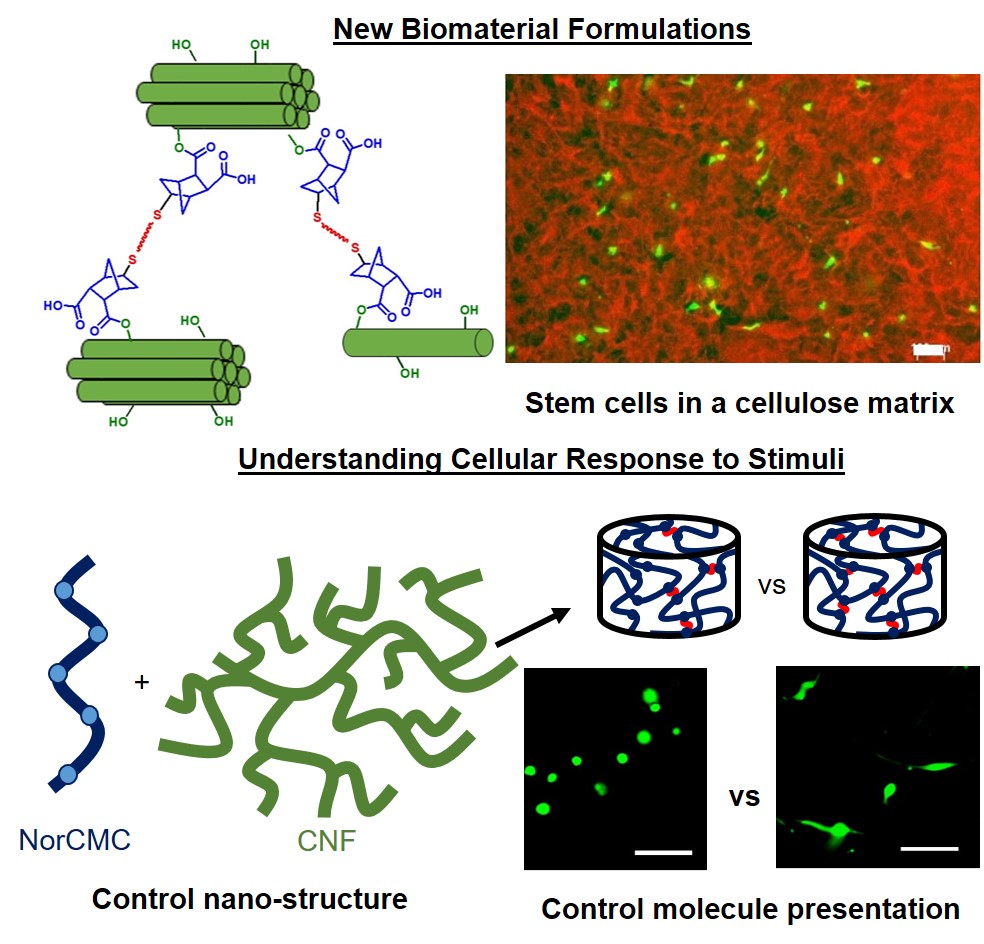Spatiotemporally Tunable Biomaterials
Cells respond to numerous mechanical, topological, and chemical cues from their surroundings or extracellular matrix (ECM). Synthetic hydrogels are an excellent synthetic mimic that can be tuned to study how individual parameters affect cell fate, control cellular regeneration, and serve as scaffolds for biological growth.
We create new macromonomers from polysaccharides to synthesize biomaterials using orthogonal chemistry to independently pattern mechanical properties and chemicals. Additionally, we also incorporate new chemical and structure cues into biomaterials to control stem cell differentiation.
We are currently researching:
Composite cellulose derived biomaterials for human mesenchymal stem cell culture.
Hydrogels that incorporate glycans as a biological cue.
New hydrogel formulations for bioinks.

Selected Publications
McOscar, T. V. C.; Gramlich, W. M. “Hydrogels from Norbornene-Functionalized Carboxymethyl Cellulose Using a UV-Initiated Thiol-Ene Click Reaction.” Cellulose 2018, 25, 6531 – 6545.
Hossen, M. R.; Dadoo, N.; Holomakoff, D. G.; Co, A.; Gramlich, W. M.; Mason, M. D. “Wet Stable and Mechanically Robust Cellulose Nanofibrils (CNF) Based Hydrogel.” Polymer 2018, 151, 231 – 241.
Kwon, M. Y.; Vega, S. L.; Gramlich, W. M.; Kim, M.; Mauck, R. L.; Burdick, J. A. “Dose and Timing of N-Cadherin Mimetic Peptides Regulate MSC Chondrogenesis within Hydrogels.” Advanced Healthcare Materials 2018, 1701199.
Dadoo, N.; Landry, S. B.; Bomar, J. D.; Gramlich, W. M. “Synthesis and spatiotemporal modification of biocompatible and stimuli responsive carboxymethyl cellulose hydrogels using thiol-norbornene chemistry.” Macromolecular Bioscience 2017, 17, 1700107.
Dadoo, N.; Gramlich, W. M. “Spatiotemporal modification of stimuli responsive hyaluronic acid/poly(N-isopropylacrylamide) hydrogels.” ACS Biomaterials Science and Engineering 2016, 2, 1341-1350.

